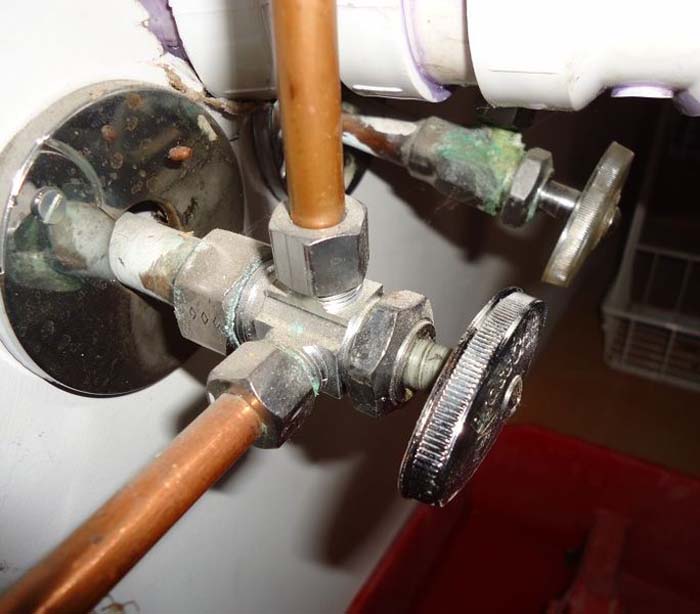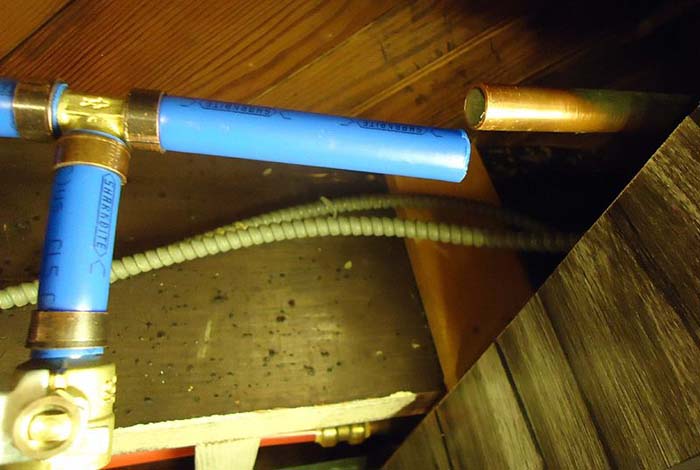
A residential pipe sizing chart is essential when designing and installing plumbing. It will guarantee the effective and secure distribution of water throughout a home. This chart recommends choosing the right pipe diameter based on water demand, available pressure, and pipe length. Proper pipe sizing reduces the risk of leaks and erosion, avoids excessive noise and velocity, and ensures sufficient water pressure at all fixtures.
The key components of a residential pipe sizing chart are:
- Material and Velocity Limits
Materials like PEX, PVC, and copper have different maximum velocities and frictional characteristics to prevent wear and noise. Size recommendations depend on the chart’s incorporation of these material-specific criteria.
- Pressure Availability
The sum of the starting pressure at the source and the necessary pressure at the fixtures defines a system’s allowable pressure drop. Using the residential pipe sizing chart as a guide, you can ensure that the selected pipe size keeps the network pressure at an adequate level.
- Layout and Pipe Length
The distance from the water source to each fixture (often a well or municipal supply) affects the pressure drop. In order to keep the pressure constant, bigger pipe diameters are required for longer distances or more intricate designs with many fittings and bends.
- Water Demand
The chart considers the overall water consumption of the house. This is influenced by the quantity and usage patterns of fixtures such as appliances, showers, and sinks. The standard units of measurement for this are flow rates (gallons per minute, GPM) or fixture units.
Benefits of Using a Residential Pipe Sizing Chart
Using a residential pipe sizing chart is a beneficial idea to ensure the plumbing system works well and safely. The main benefits are as follows:
Water Flow Optimization
Home fixtures like appliances, showers, and faucets rely on the system’s continuous and dependable water flow and pressure. This is guaranteed when the pipes are properly sized.

Scalability
An appropriately sized foundation system facilitates the integration of new components without substantial rework in the event of future upgrades or expansions.
Compliance with codes
Several plumbing standards and building codes dictate the use of various pipe sizes. If you want to stay out of legal hot water and make sure everyone stays safe, use a residential pipe sizing chart to keep track of all the rules and regulations.
Longevity of the System
The plumbing system can last longer because problems like excessive wear on components, pressure drop, and water hammer can be avoided with proper sizing.
Predictable Performance
Using a standardized chart allows for uniform and predictable system performance, facilitating problem diagnosis and fixation.
Cost Efficiency
Avoiding the need for larger, more expensive pipes is one way that properly designed pipes save material costs. Improper sizing can lead to expensive modifications and repairs, which also helps limit that risk.
Simplified Planning and Installation
Builders and plumbers may streamline the design and installation processes with a residential pipe sizing chart as a guide. The installation process will be more straightforward and effective, reducing the risk of errors.
Energy Efficiency
The right-sized pipes can increase HVAC systems’ energy efficiency by easing the strain on compressors and pumps. This could result in a smaller carbon footprint and lower energy bills.
Safety
Safety risks like pollution from backflow, bursts, or leaks from backflow can be avoided with pipes that are appropriately sized. Systems that provide potable water and other essential functions place a premium on this.
Precise Sizing
Making sure the pipes are the right size for the job is easier with the help of a residential pipe sizing chart. Problems such as excessive velocity and insufficient water pressure can cause pipe damage, erosion, and noise. These problems can be avoided with proper sizing.
What is the standard residential plumbing size?
While exact measurements are dependent on application and regional construction regulations, the following are typical sizes for standard plumbing fixtures:
- Water Supply Lines
- Branch lines range from 1/2 to 3/4 inch in diameter.
- The main lines range in diameter from 3/4 inch to 1 inch.
- Fixture Supply Lines
- The required diameter for faucets, toilets, and sinks is 3/8 inch.
- Drainage Pipes
The standard diameter for the main drain line is four inches.
- Drain pipes for toilets and sinks should have a diameter of 1 1/4 to 1 1/2 inches.
- It’s common for drain pipes in bathrooms and showers to have a diameter of two inches.
- Most toilet drain pipes have a diameter of three inches.
- Diameters ranging from 1 1/2 inches to 2 inches are typical for branch drain lines.
- Vent Pipes
- The typical diameter ranges from 1 1/4 to 2 inches, though this can vary depending on the plumbing system’s specifications.
These sizes guarantee the correct venting and drainage of waste lines, sufficient flow rates, and water pressure for supply lines. It is crucial to consult a licensed plumber or local authorities before making plans or changes to a plumbing system. This is because various building codes and regulations may require different proportions.
What size water line do I need to run 500 feet on?
How much water line do you need to run 500 feet? That depends on your flow rate and how much pressure drop you can handle. Based on the typical home water supply, the following are some general recommendations:
- Local Regulations
The minimum pipe size for a home’s water line could differ depending on your area’s rules and regulations.
- Consider the Drop in Pressure
The pressure drop due to friction increases as the water line lengthens. For a given flow rate, the pressure drop will be smaller in a pipe with a larger diameter because there will be less friction.
- Pressure Loss
Due to friction, a pressure decrease will occur when water flows through the pipe. As the pipe length increases, friction losses increase. In pipelines with larger diameters, pressure loss over distance is reduced.
- Flow Rate Requirements
Find out how many gallons per minute of water flow you require at the furthest distance from your water source. Some examples of this kind of water usage include running the washing machine, the taps, and the shower all at once.
- Pipe Sizing
Most water lines used in homes are between 3/4 inch and 1 inch in diameter.
- 3/4 inch:
This is usually the smallest size homeowners are advised to use. Its 6 to 12 gallons per minute output should be enough for most households.
- 1 inch:
This fixture is ideal for larger households with higher water demands because it has a flow rate of 9 to 17 gallons per minute.
For residential applications, a pipe diameter of 1 inch for a 500-foot run is generally recommended. This will ensure adequate water flow while minimizing pressure drops. If the flow rate isn’t too high, you might get away with a 3/4-inch pipe that is low. To be sure you’re following all local requirements and meeting your unique demands, it’s a beneficial idea to have a professional’s opinion, such as that of a plumber.
What size PEX should I use in my house?
Several criteria, including your plumbing system’s pressure and flow rate, determine the appropriate PEX tubing size for your home. As a general rule, consider the following:
- Pressure Requirements
- Verify that all fixtures and appliances have the proper pressure requirements. Most fixtures only need 1/2-inch PEX, but if your bathroom features a high-flow bathtub tap or large rain showerhead, you may want to go with 3/4-inch PEX for the best performance.
- Budget and Installation Considerations
- When budgeting for your plumbing system, you may need to consider the cost of fittings and connectors, as well as the price of greater-diameter (PEX) cross-linked polyethylene. While doing this, take into account your household’s performance requirements.
- Flow and Fixture Count Requirements
- Think about how many fixtures (toilets, showers, sinks, etc.) each line can reach. Also, how often will people use the fixtures at the same time? If several appliances or bathrooms draw water simultaneously, using larger-diameter cross-linked polyethylene, which is 3/4 inch, is better.
- Local Plumbing Codes
- Check your city’s plumbing regulations and codes before installing new fixtures. Some projects may require specific minimum sizes. Ensuring your plumbing system is compliant is important for efficiency and safety.
- Residential Water Supply
- Hot Water Lines
For hot water lines, a PEX of 3/4 inches is generally recommended to minimize pressure drop and maintain acceptable flow rates, particularly in larger houses or areas where increased hot water demand is anticipated.
- Cold water lines
In most cases, PEX measuring 1/2 inch is more than enough for domestic cold water connections. It is suitable for residential use, with typical pressures and flow rates.
In summary, for most residential applications:
- For smaller hot water lines and regular cold water lines, where demand is low, use 1/2-inch cross-linked polyethylene (PEX).
- For areas expecting higher pressures or flows or larger hot water lines, 3/4-inch PEX is a suitable option.
For more precise instructions relevant to your area’s requirements and conditions, it’s best to check the building codes in your area, seek the advice of a plumber, or check the building codes in your area.
Conclusion
In order to create plumbing systems that are safe, efficient, and cost-effective, a residential pipe sizing chart is a crucial tool. All parts must be in sync for the system to function properly, guaranteeing consistent service and adherence to regulations.
